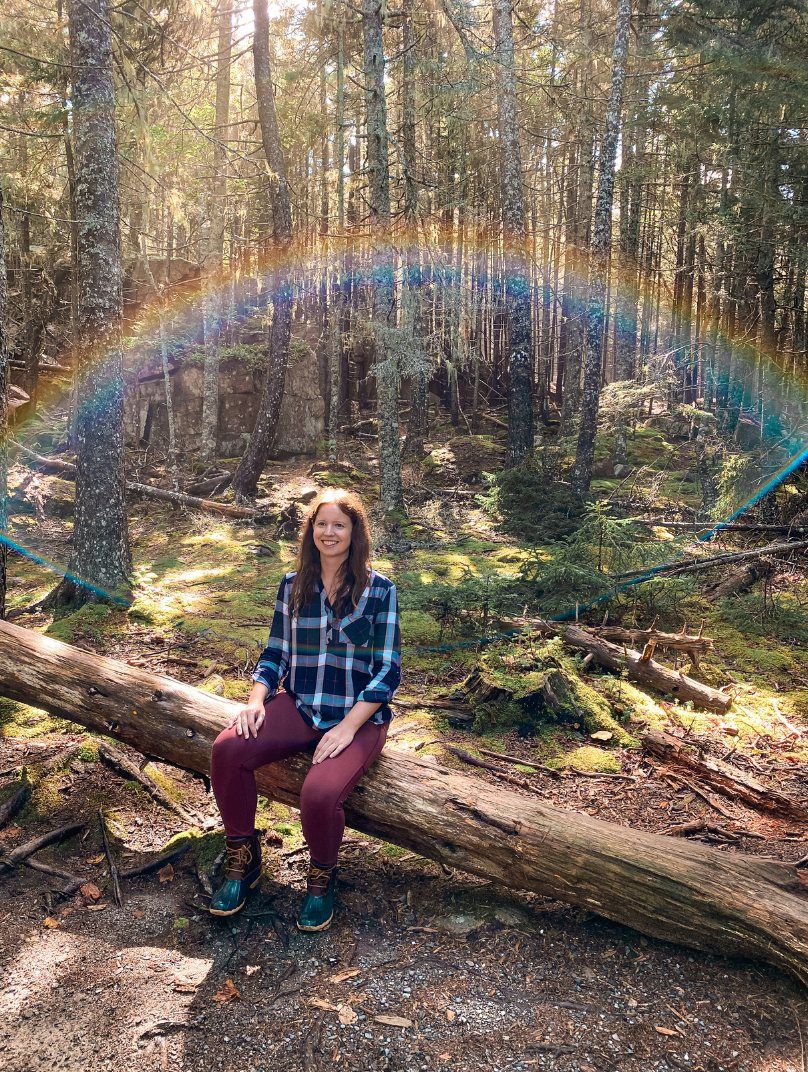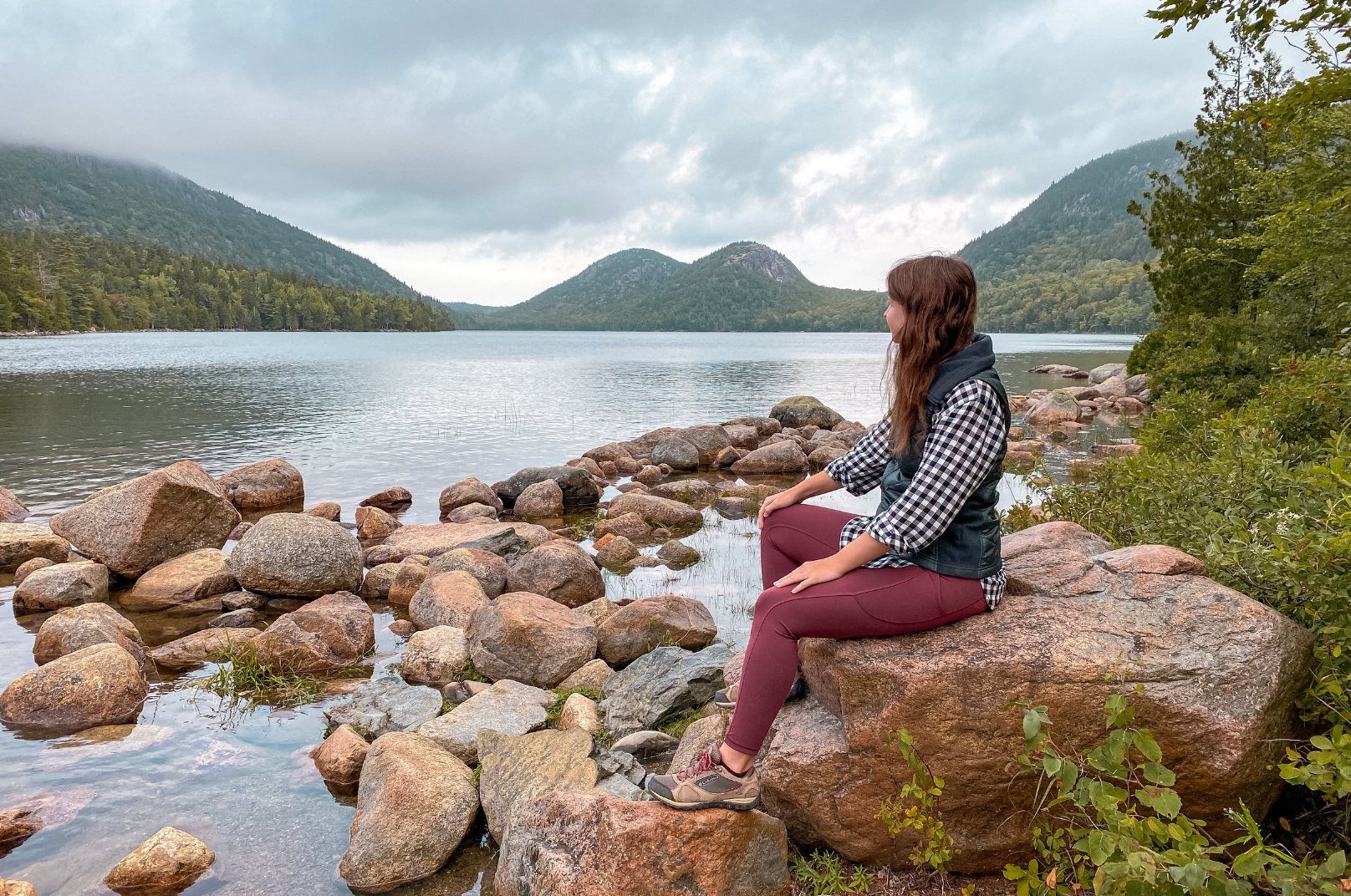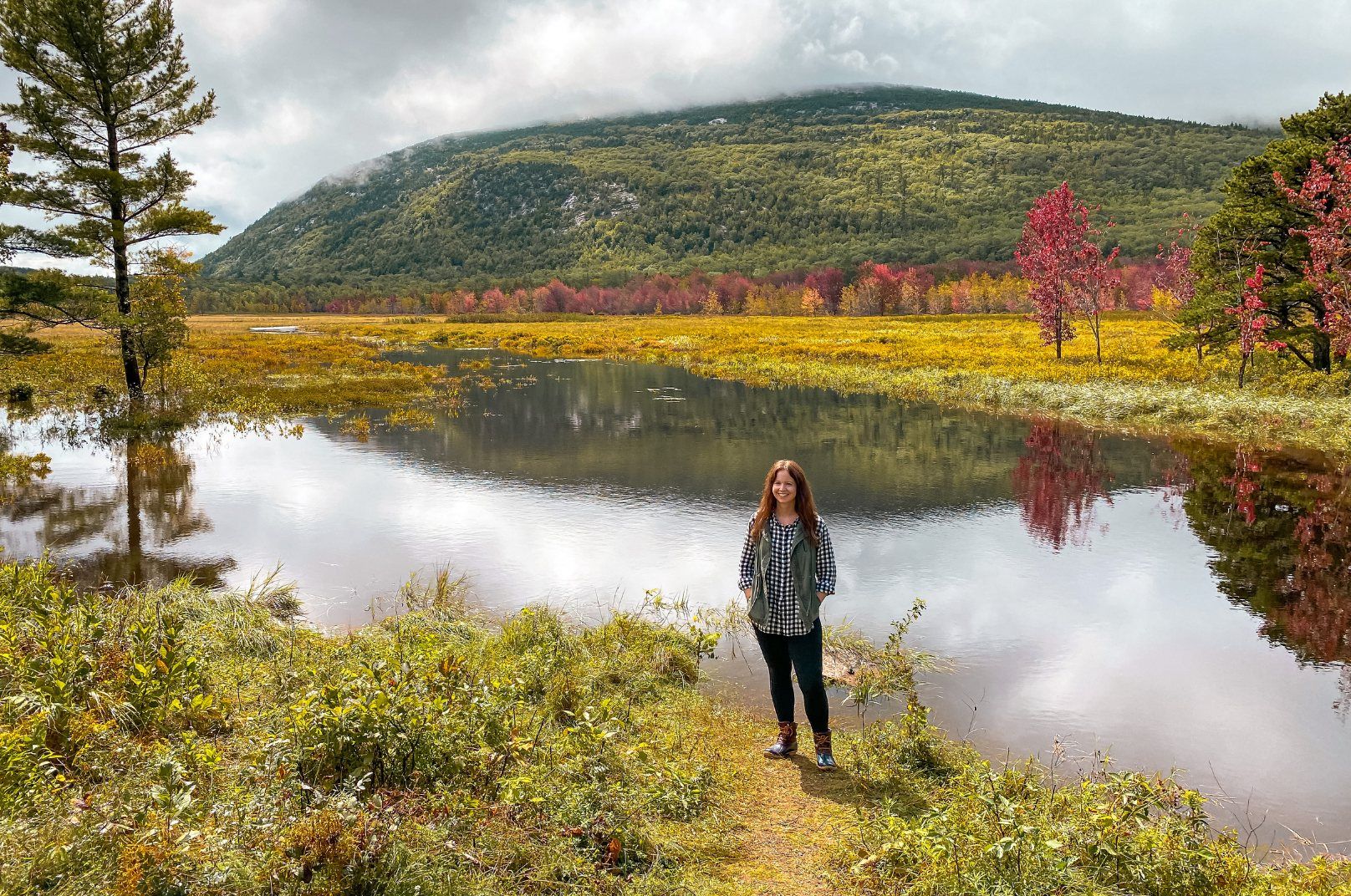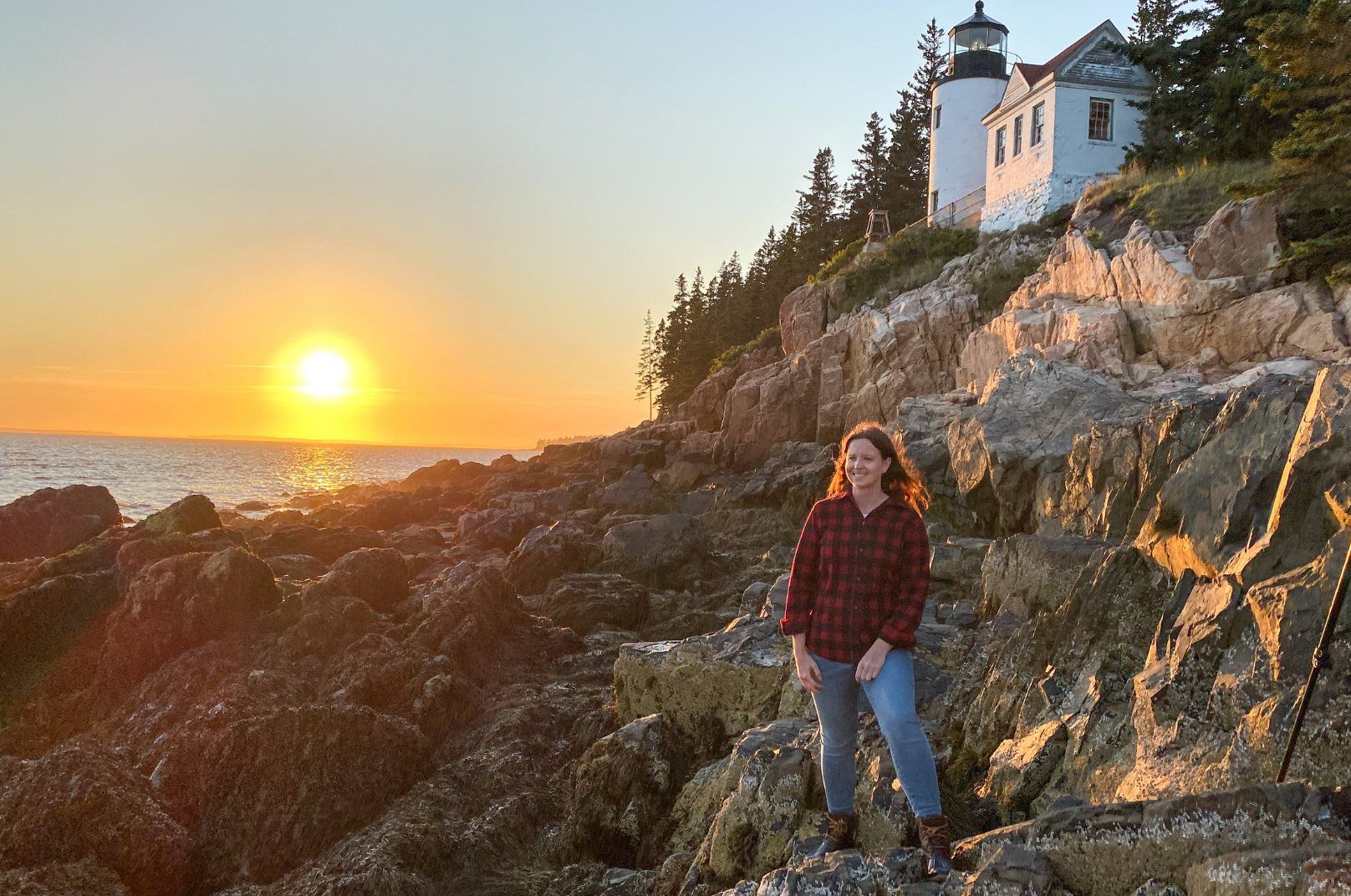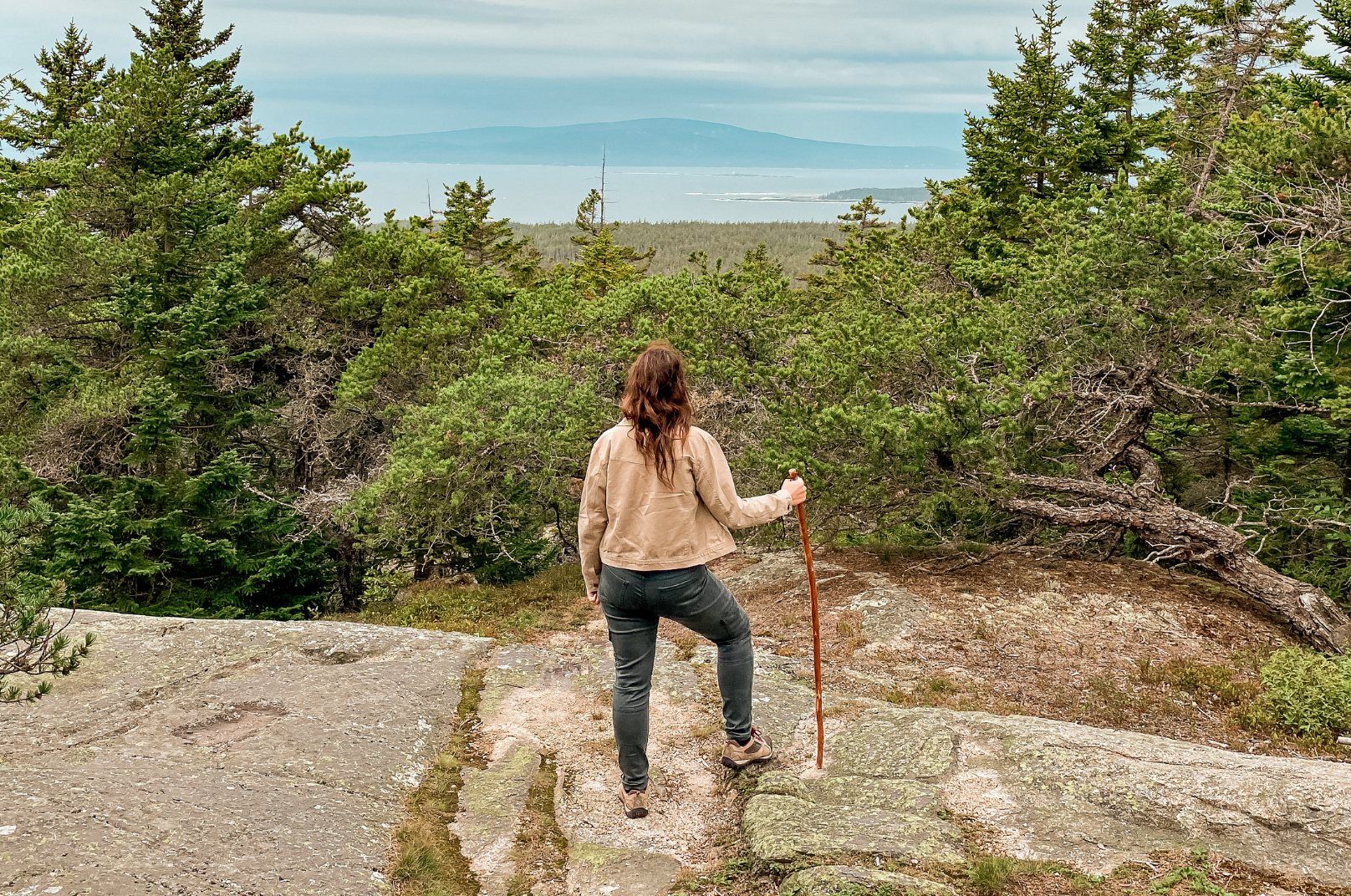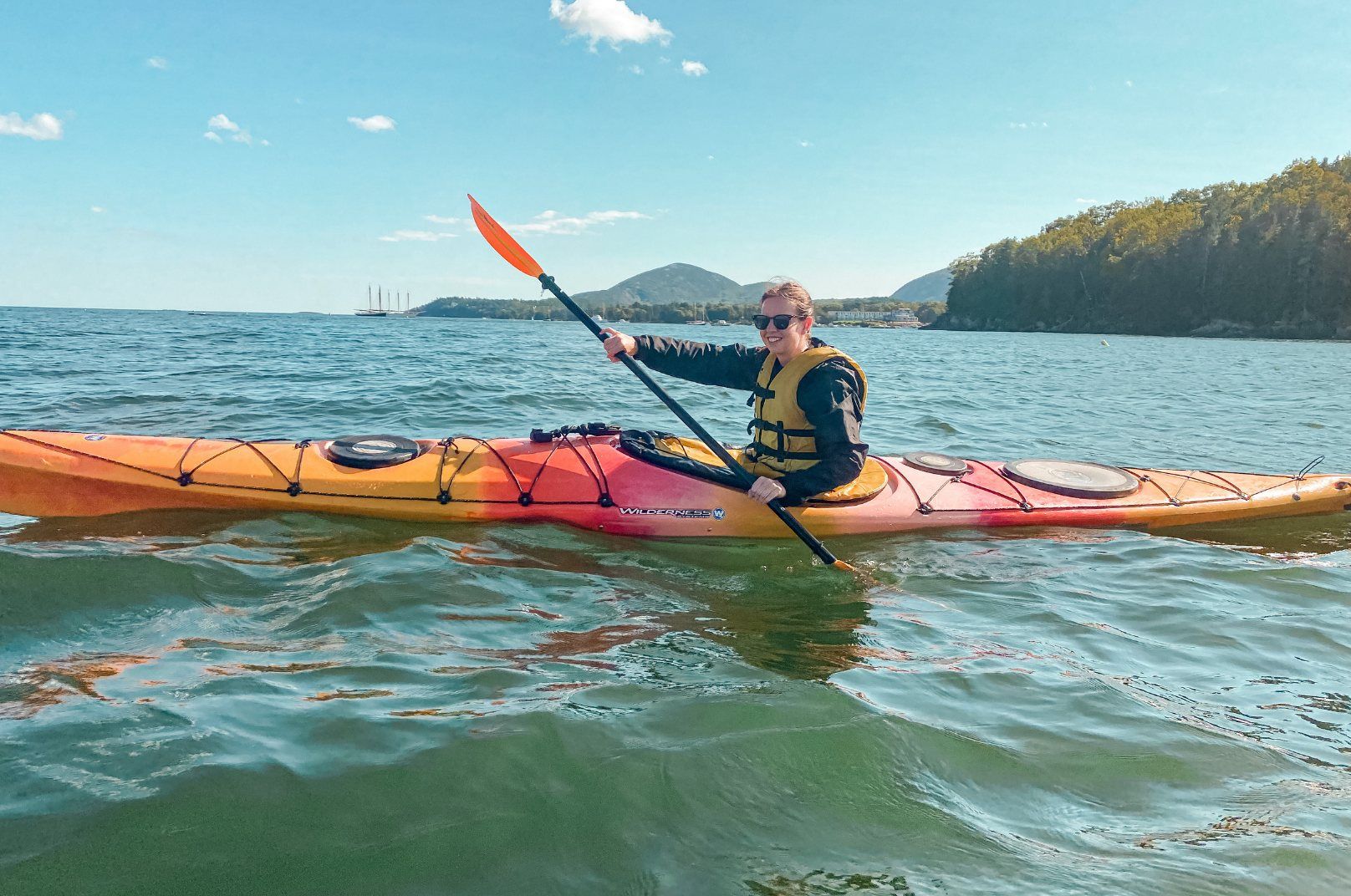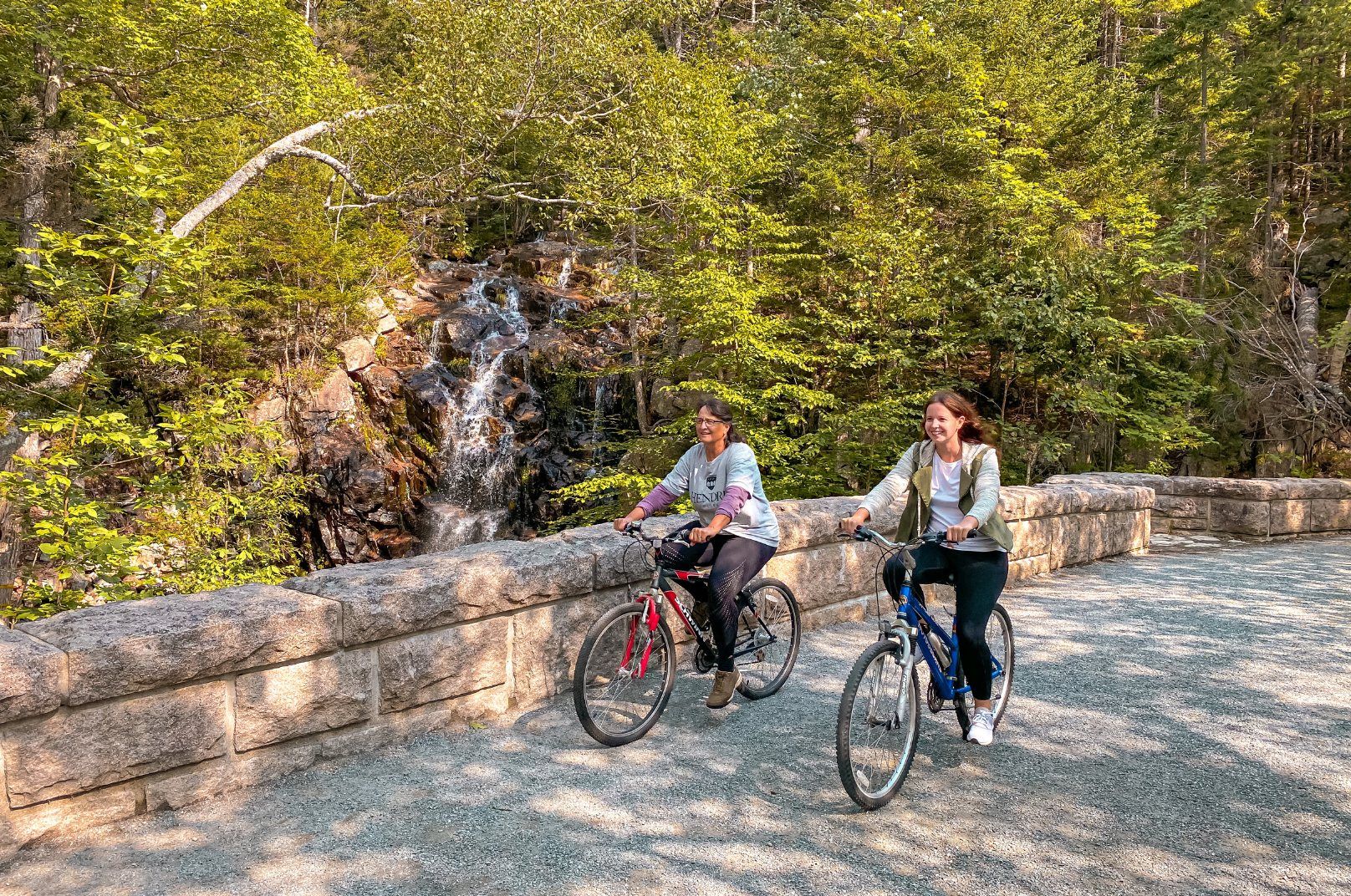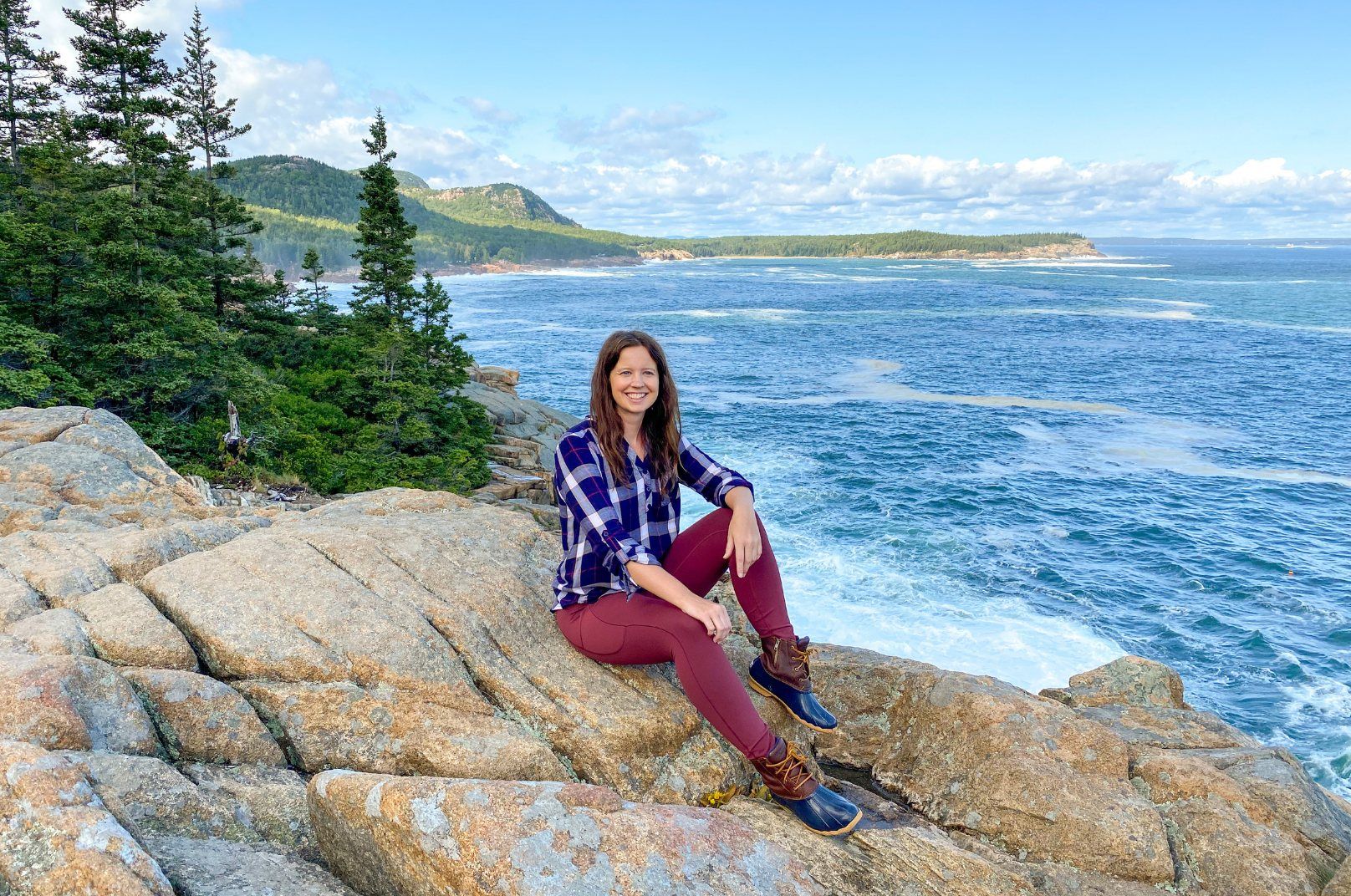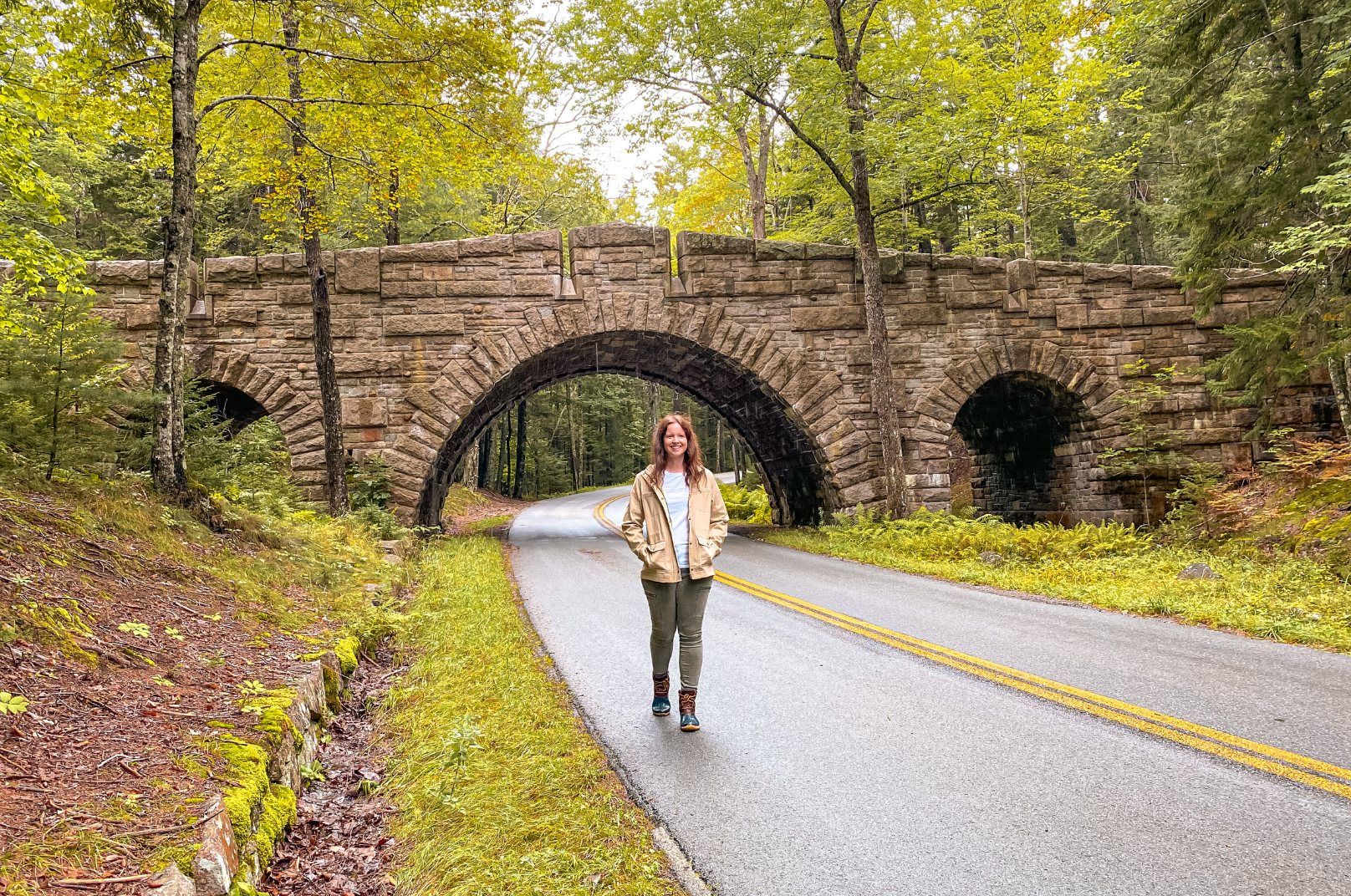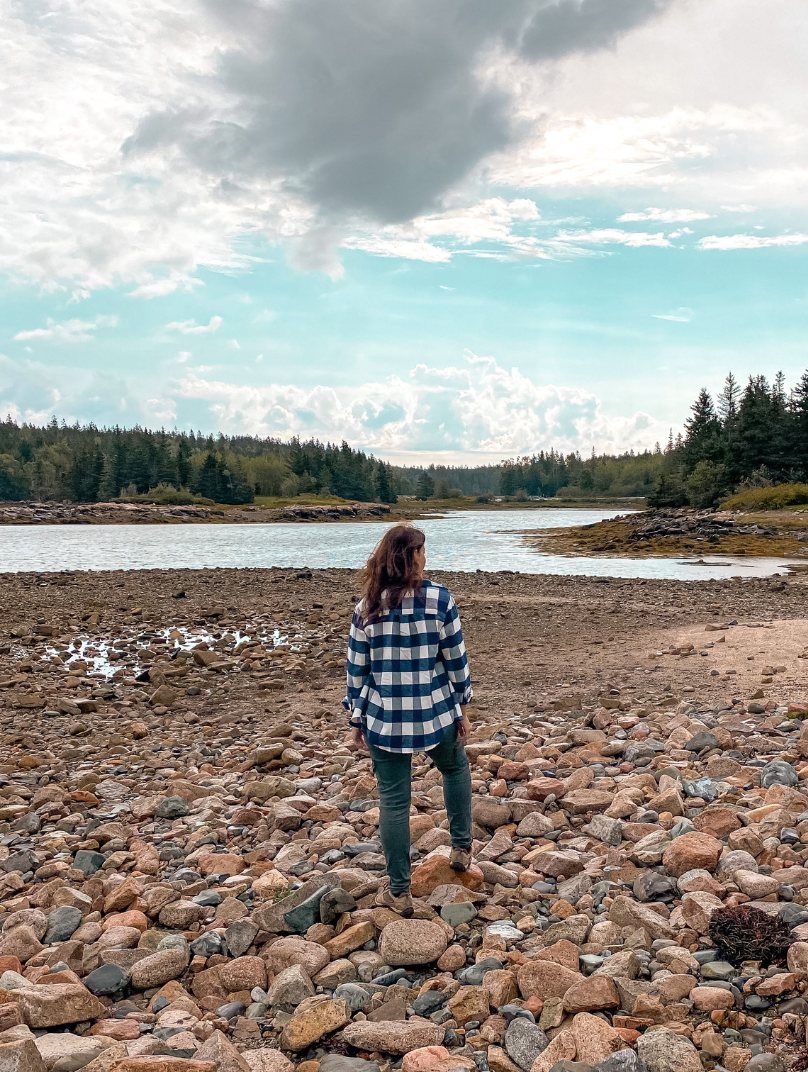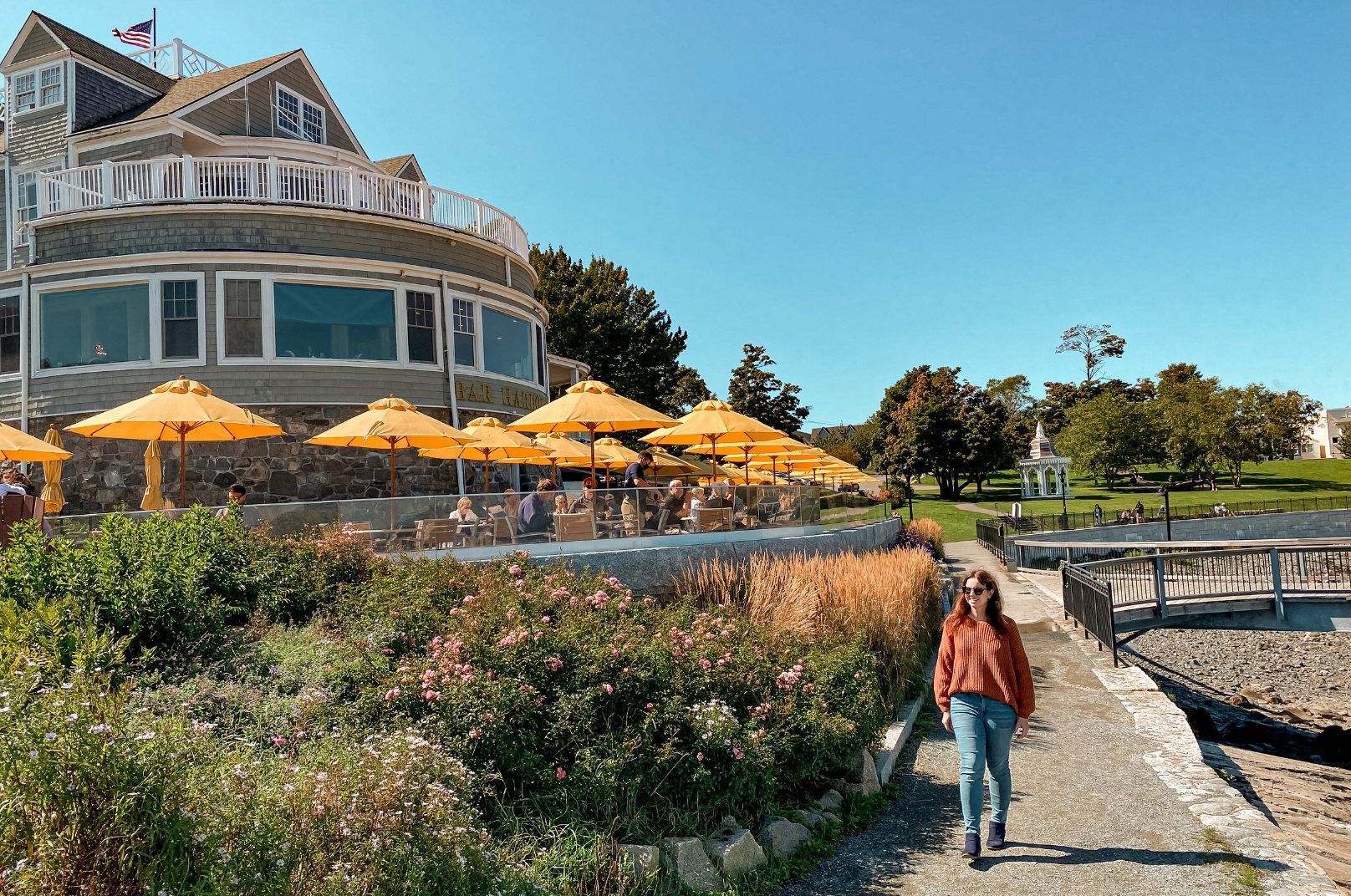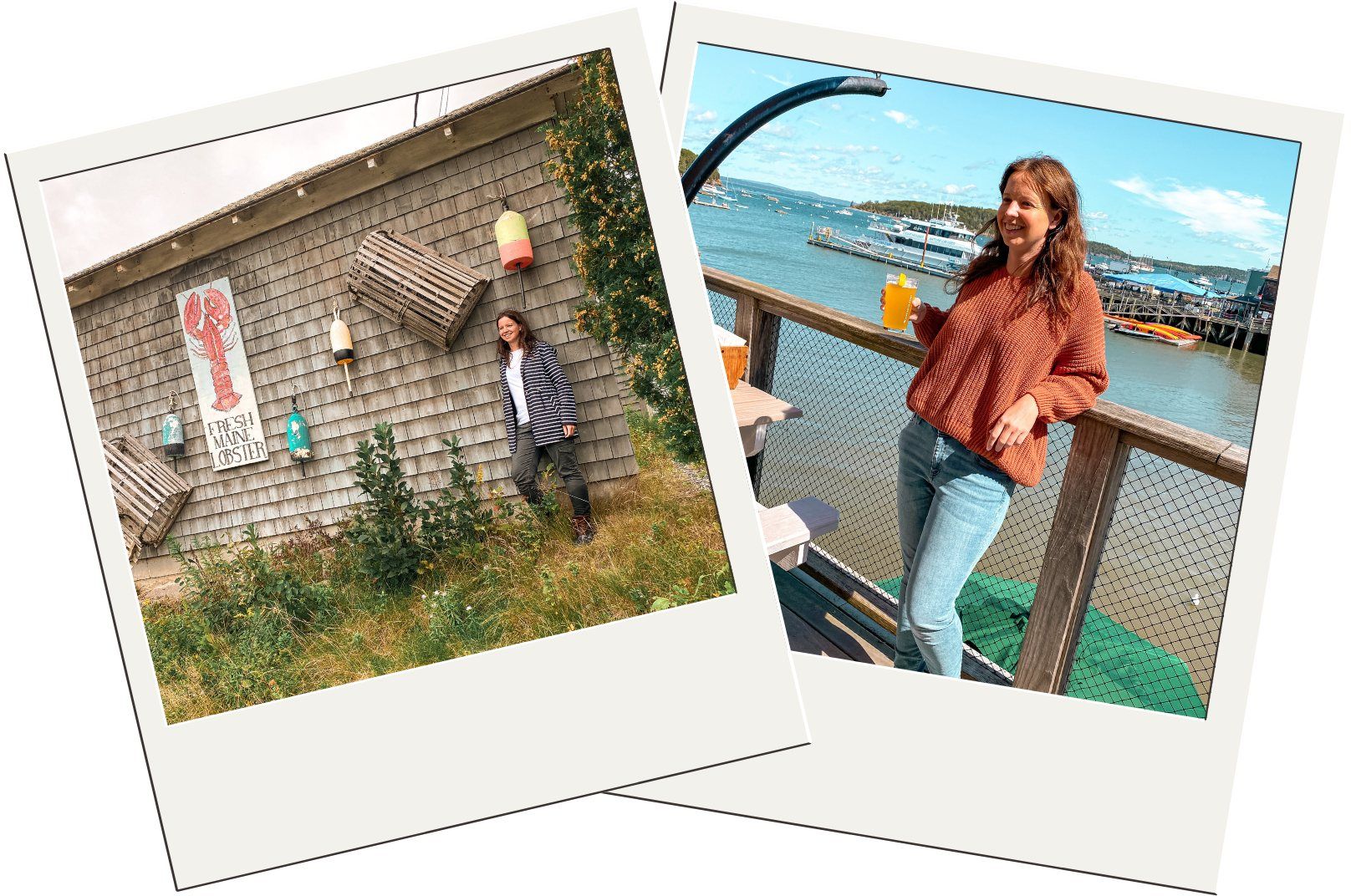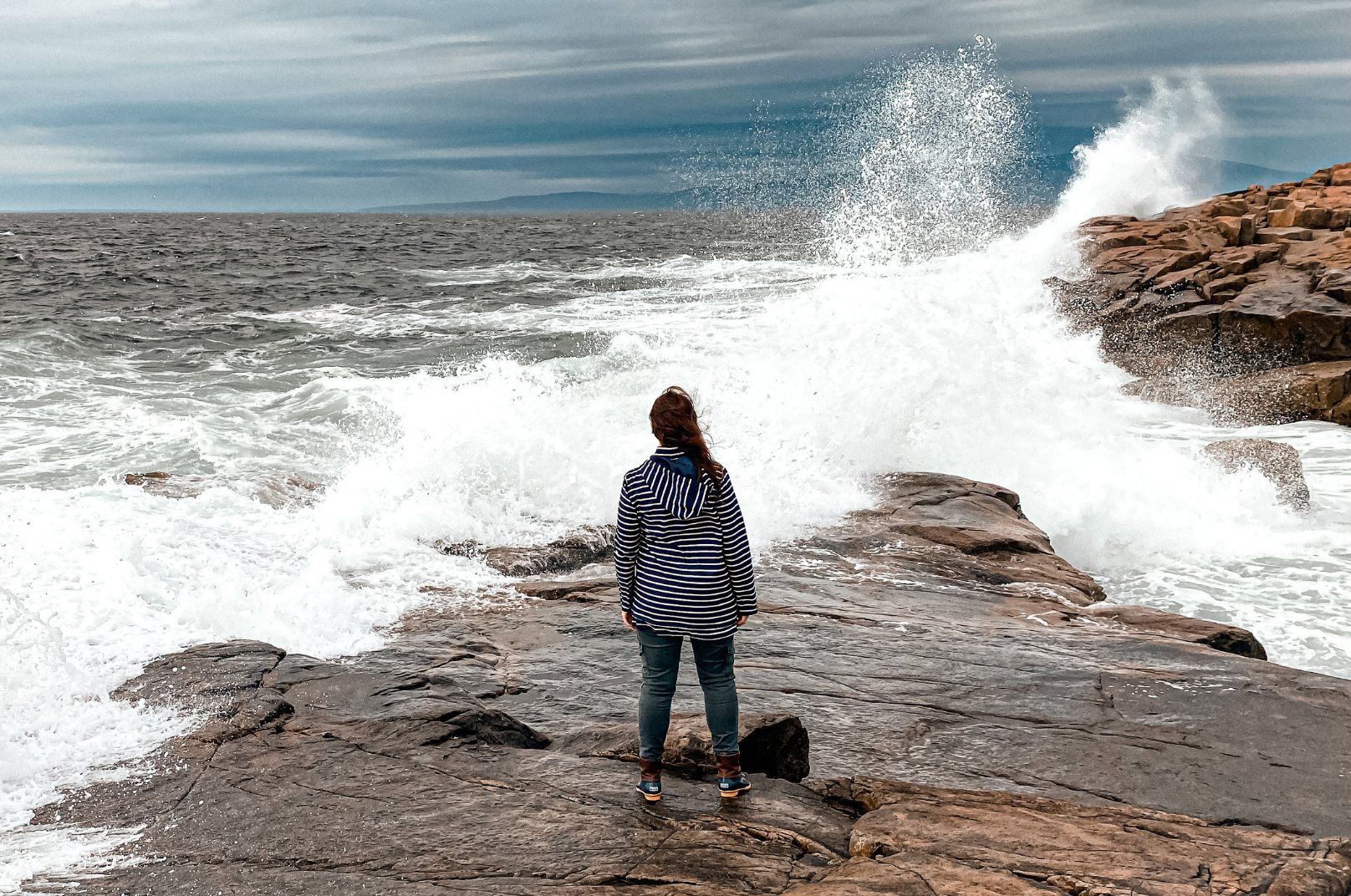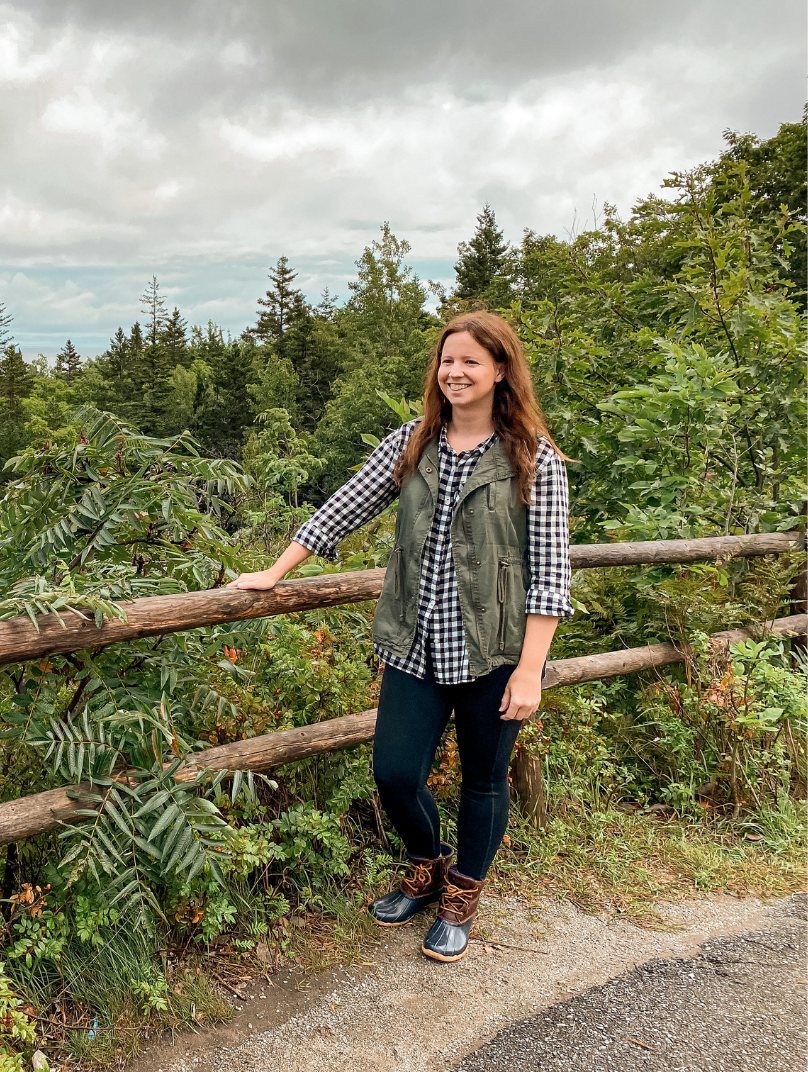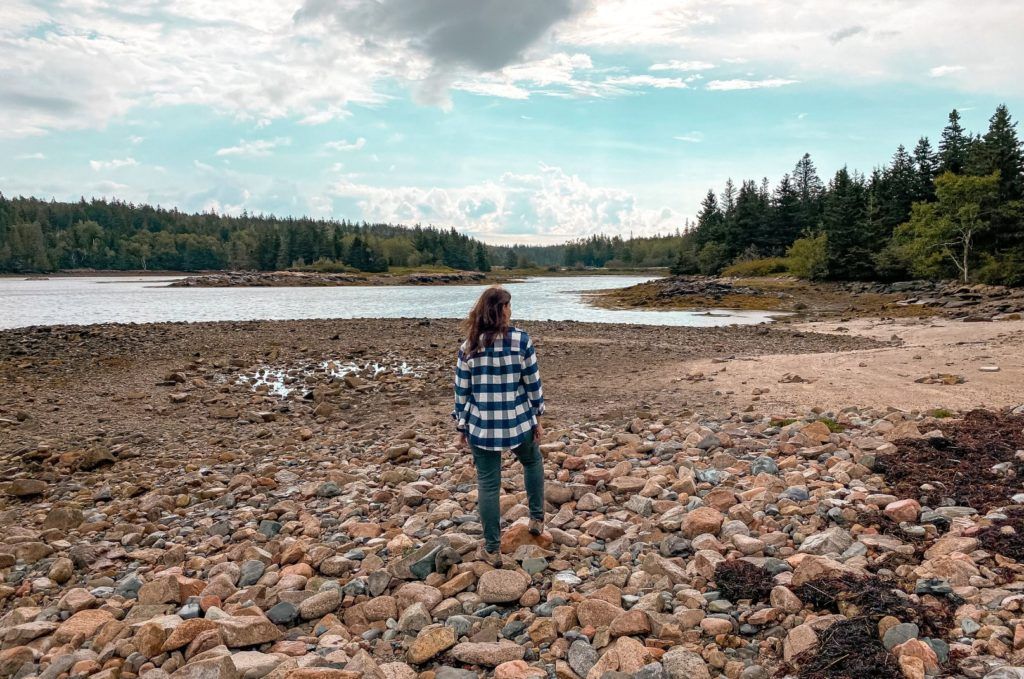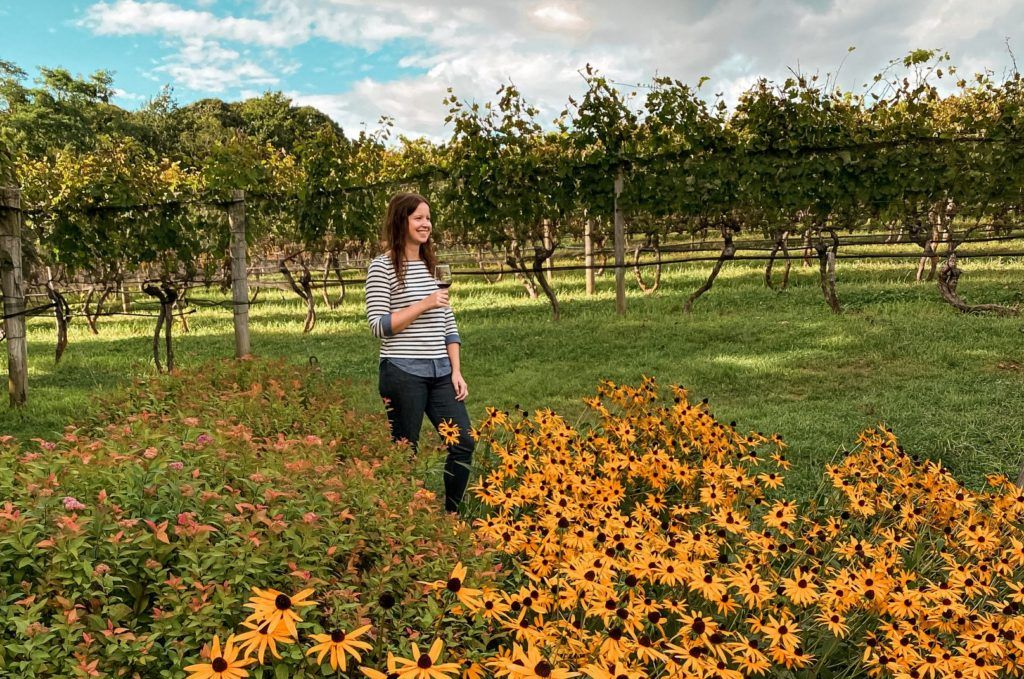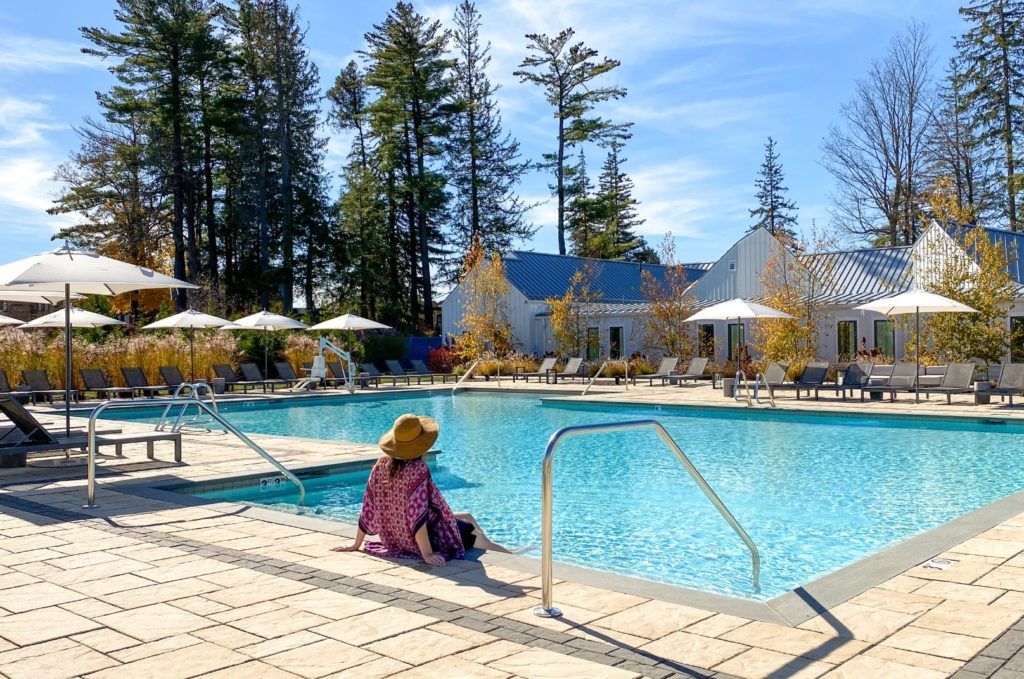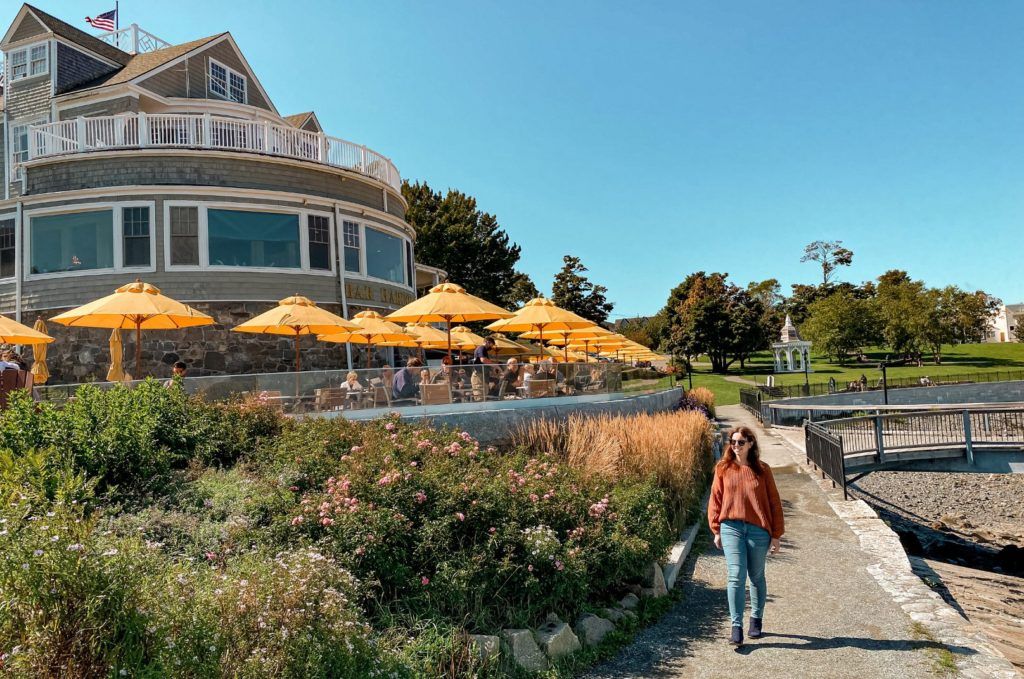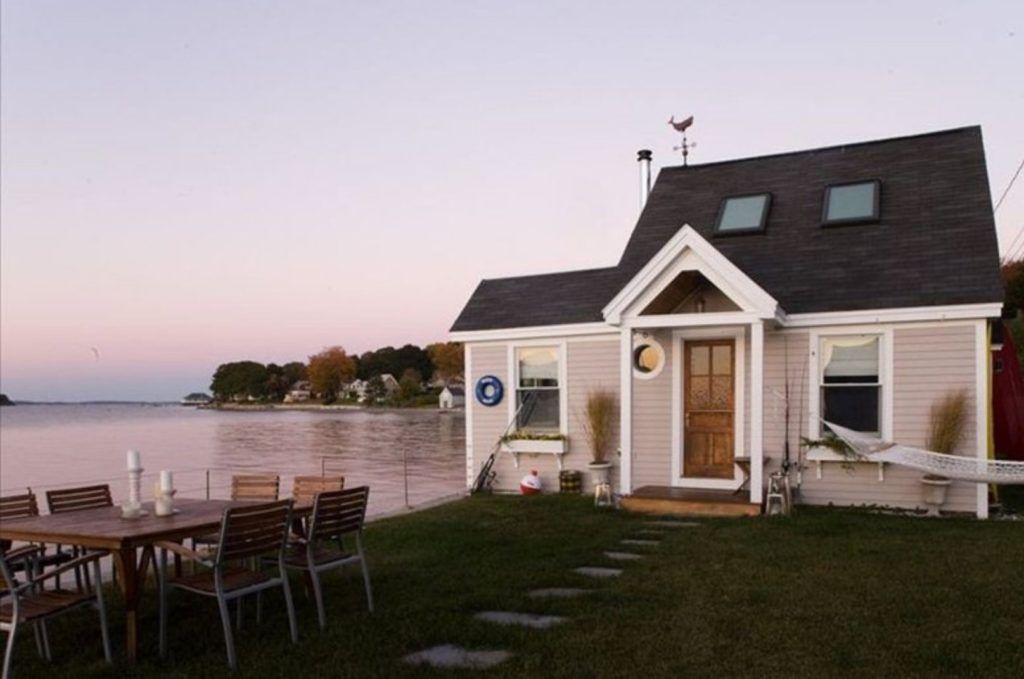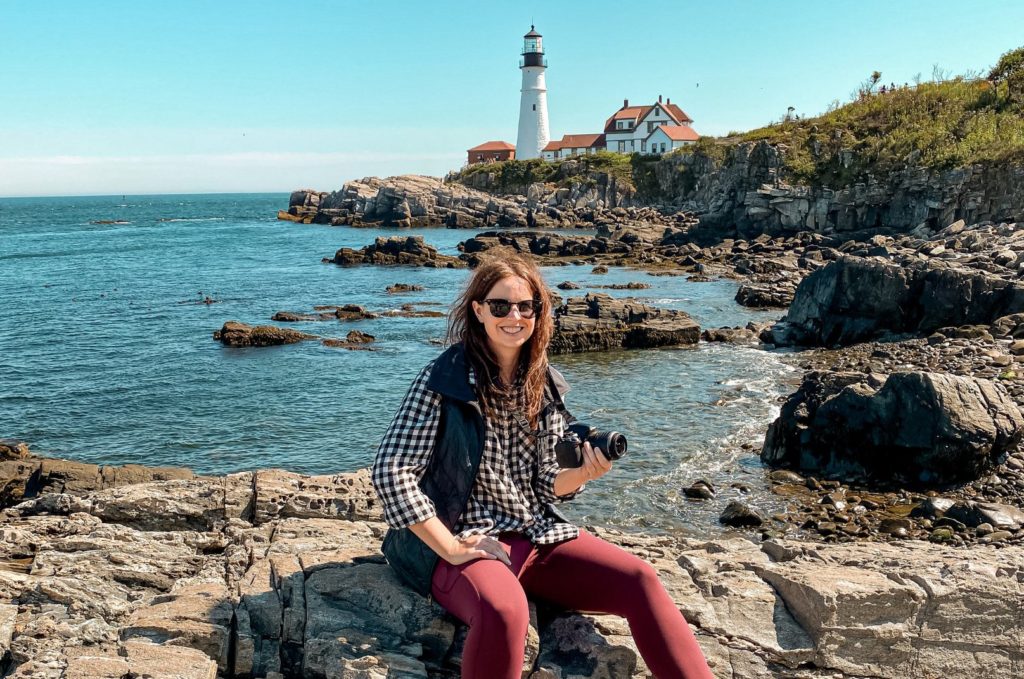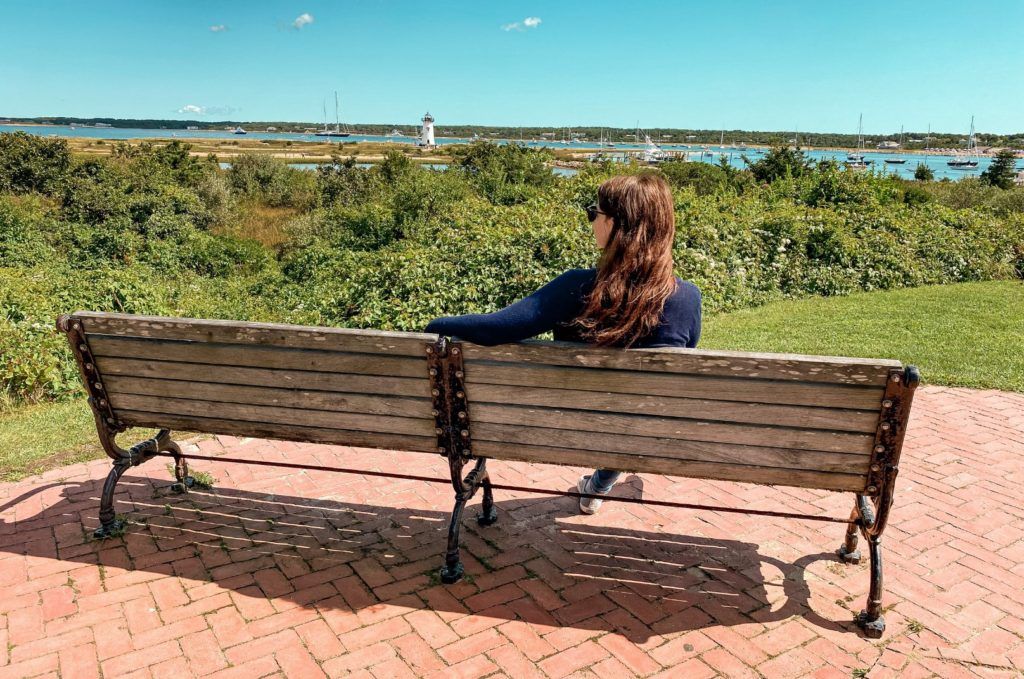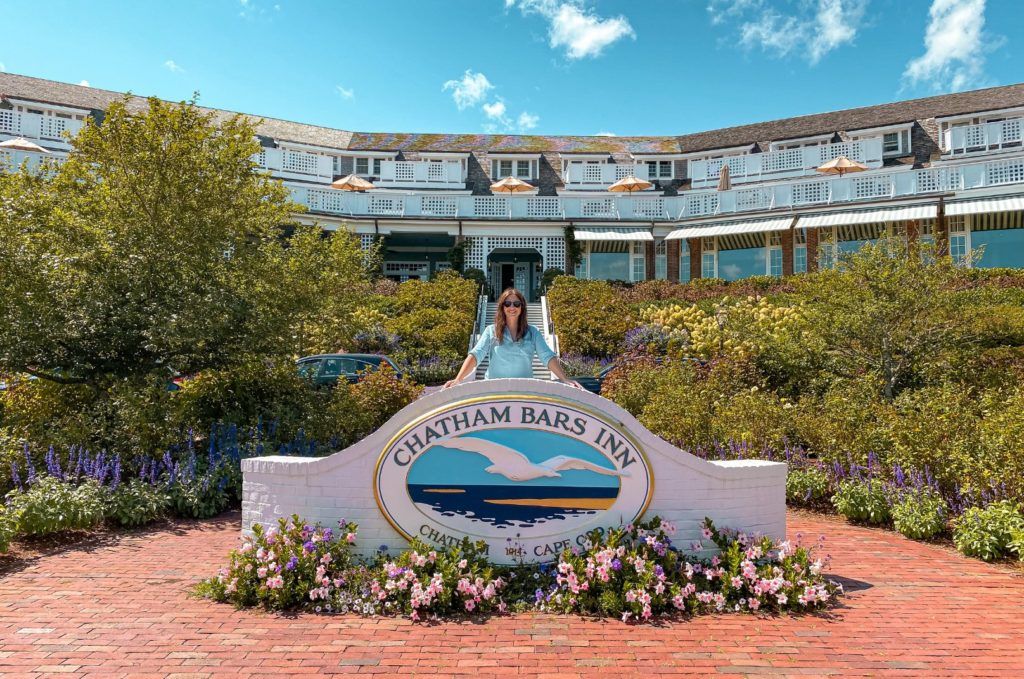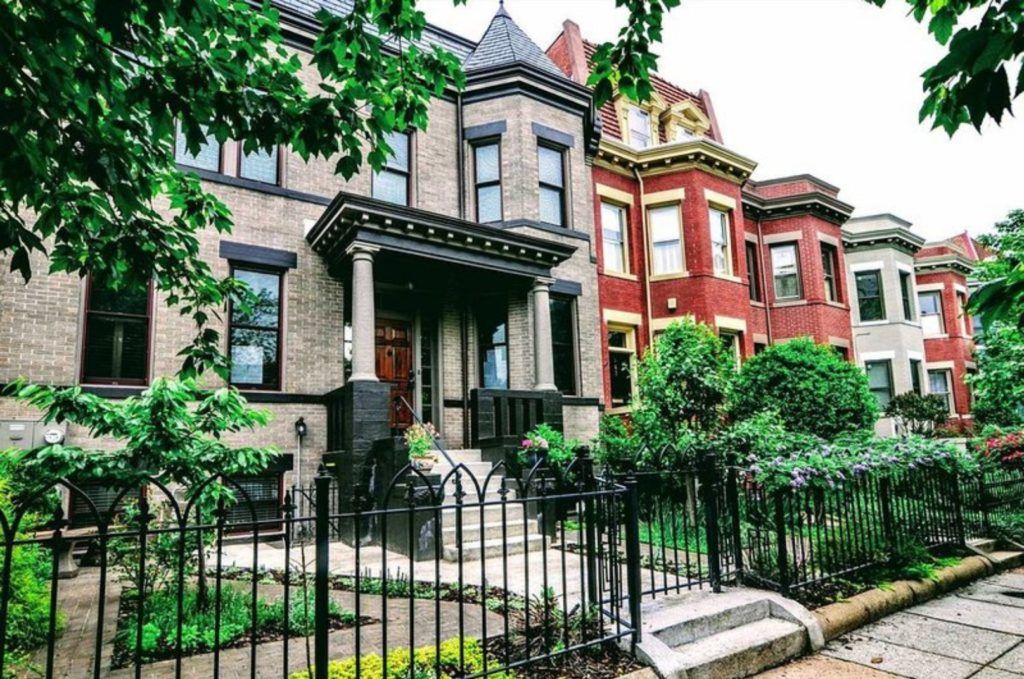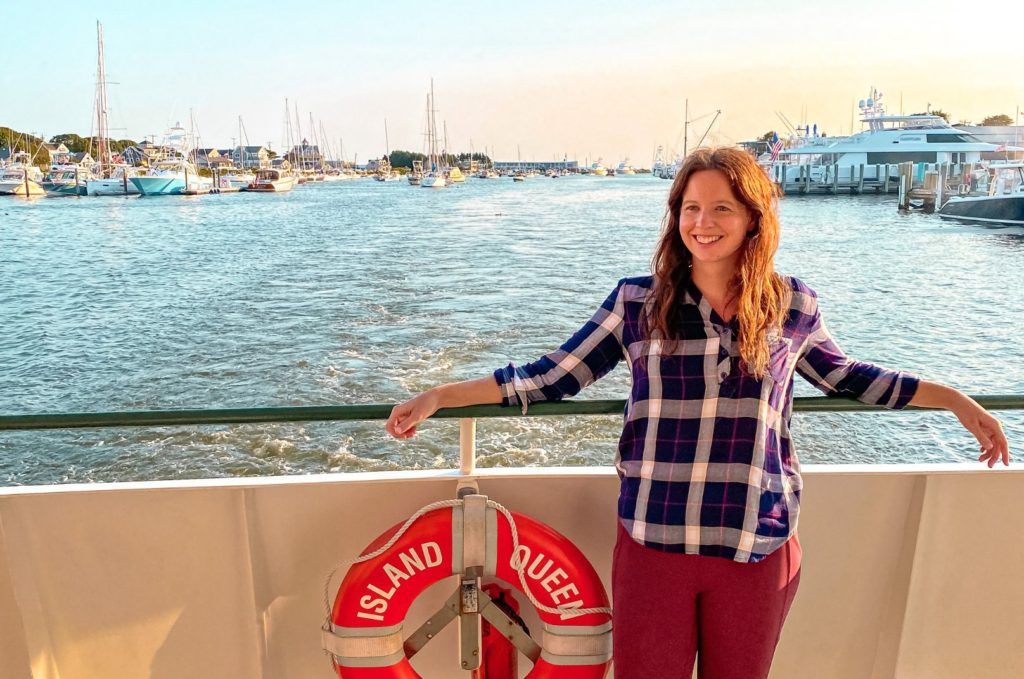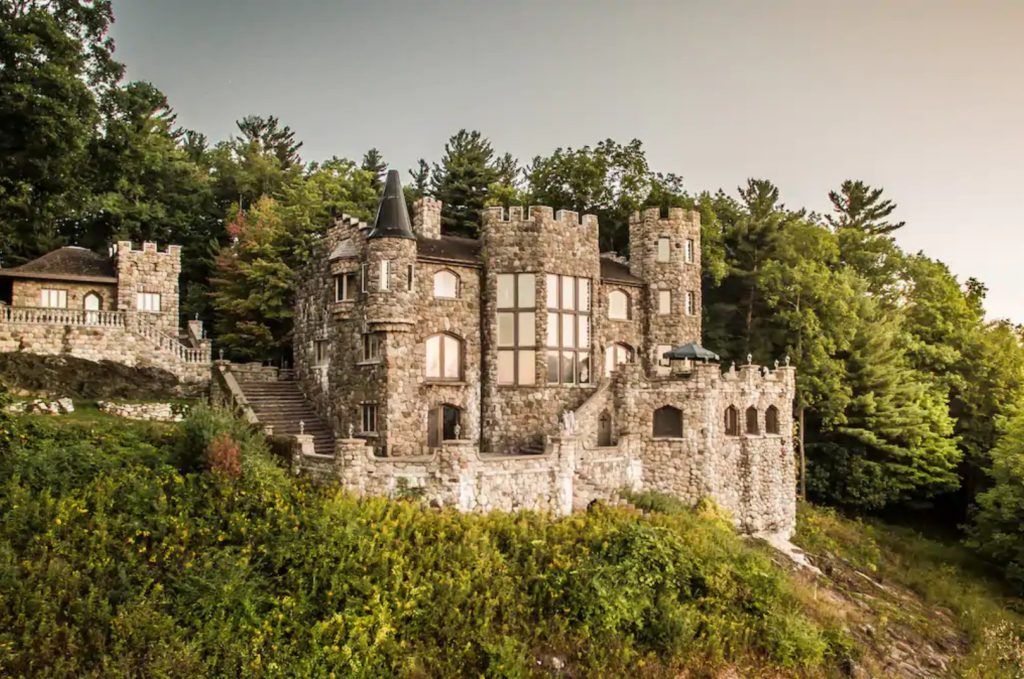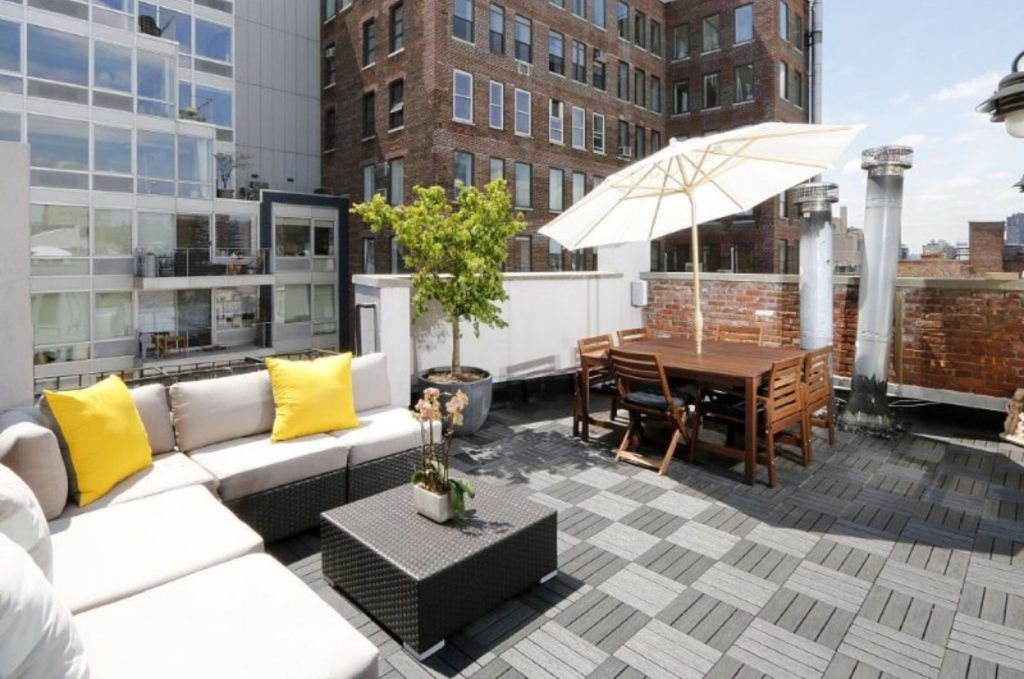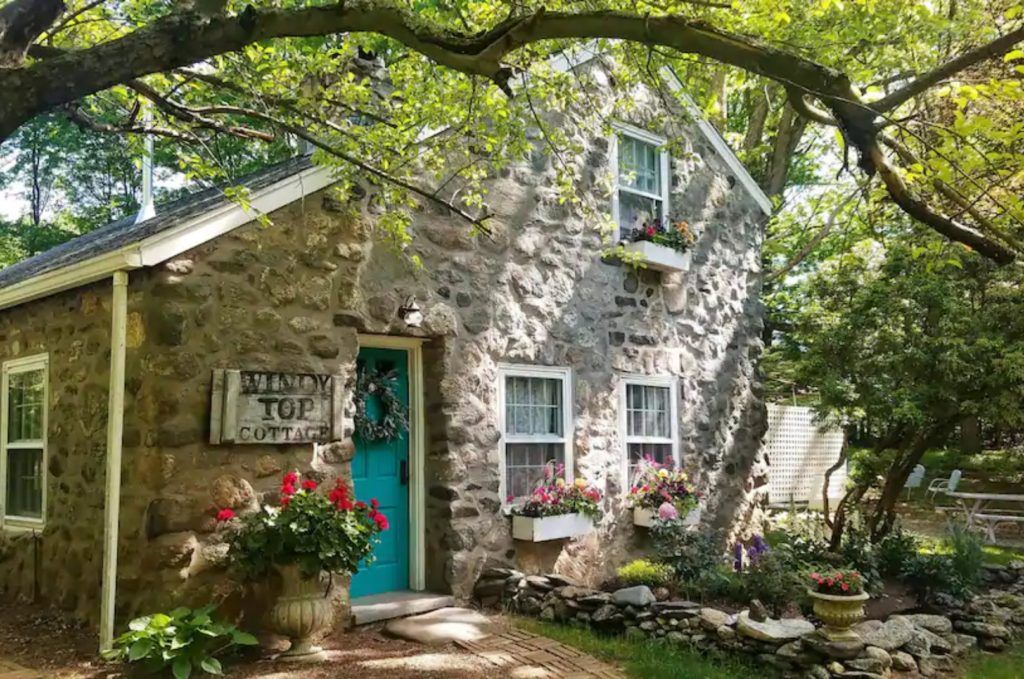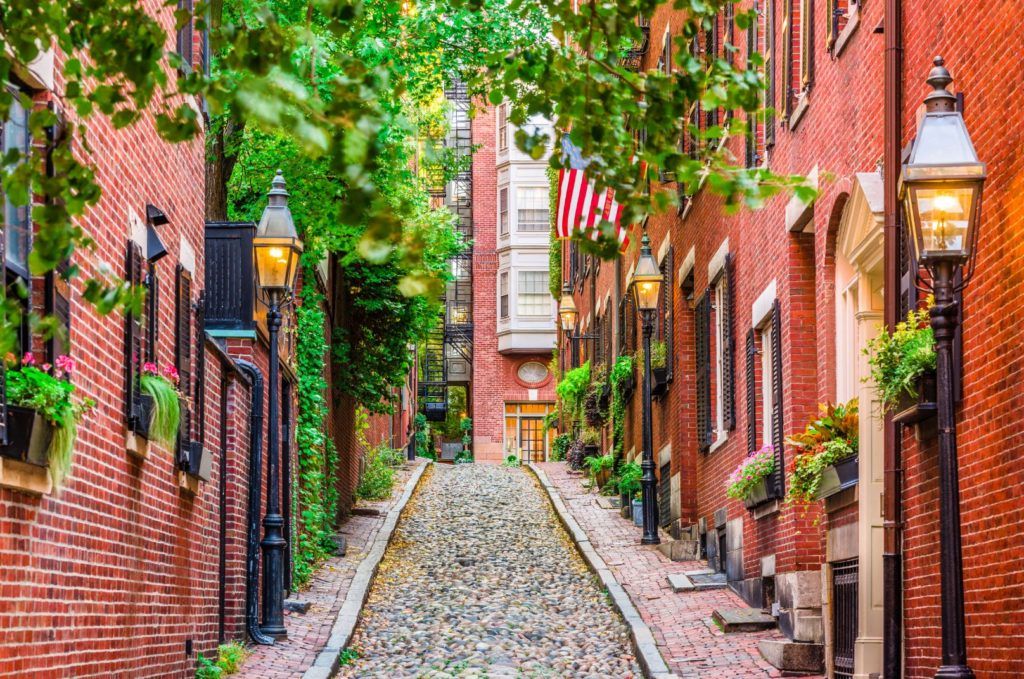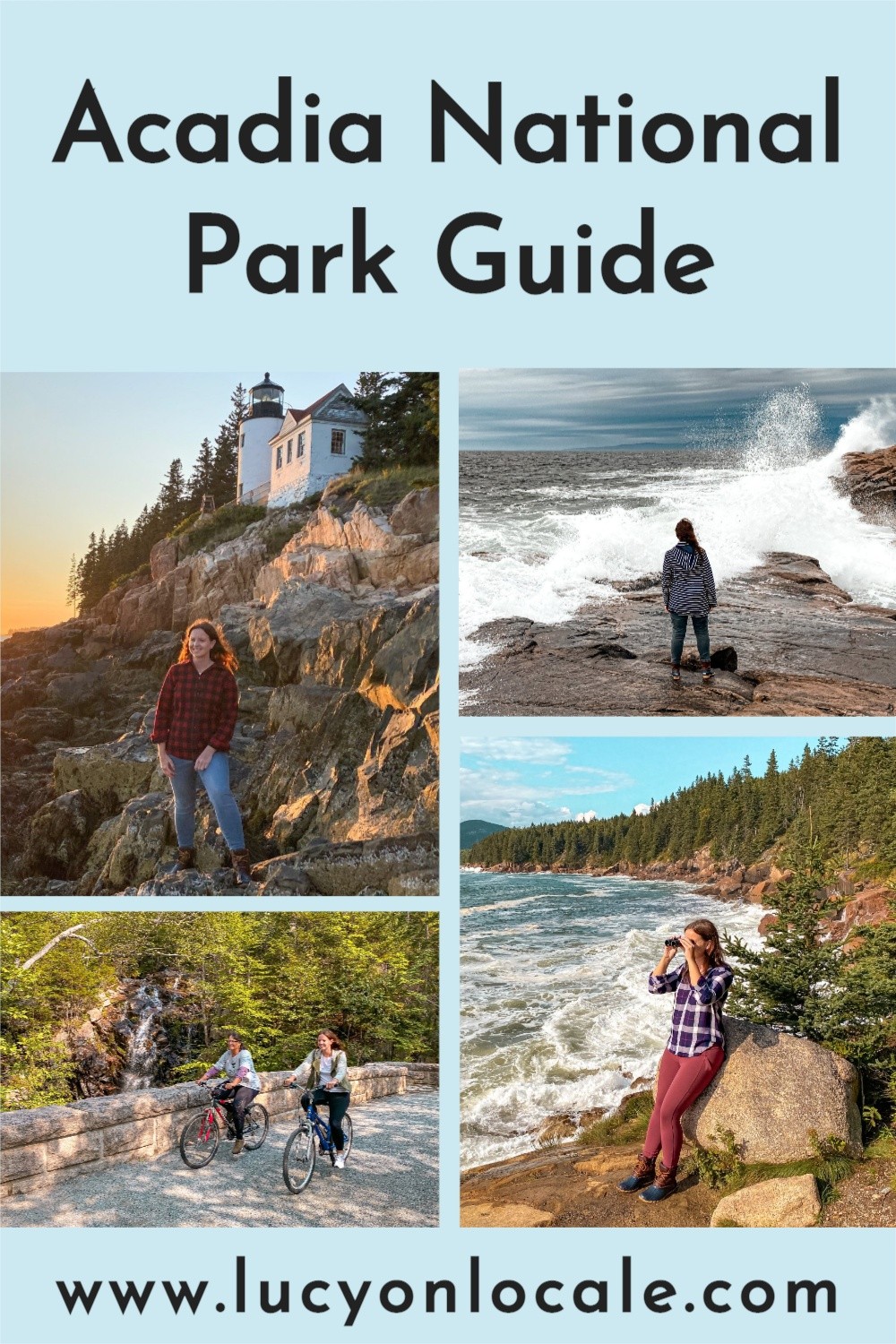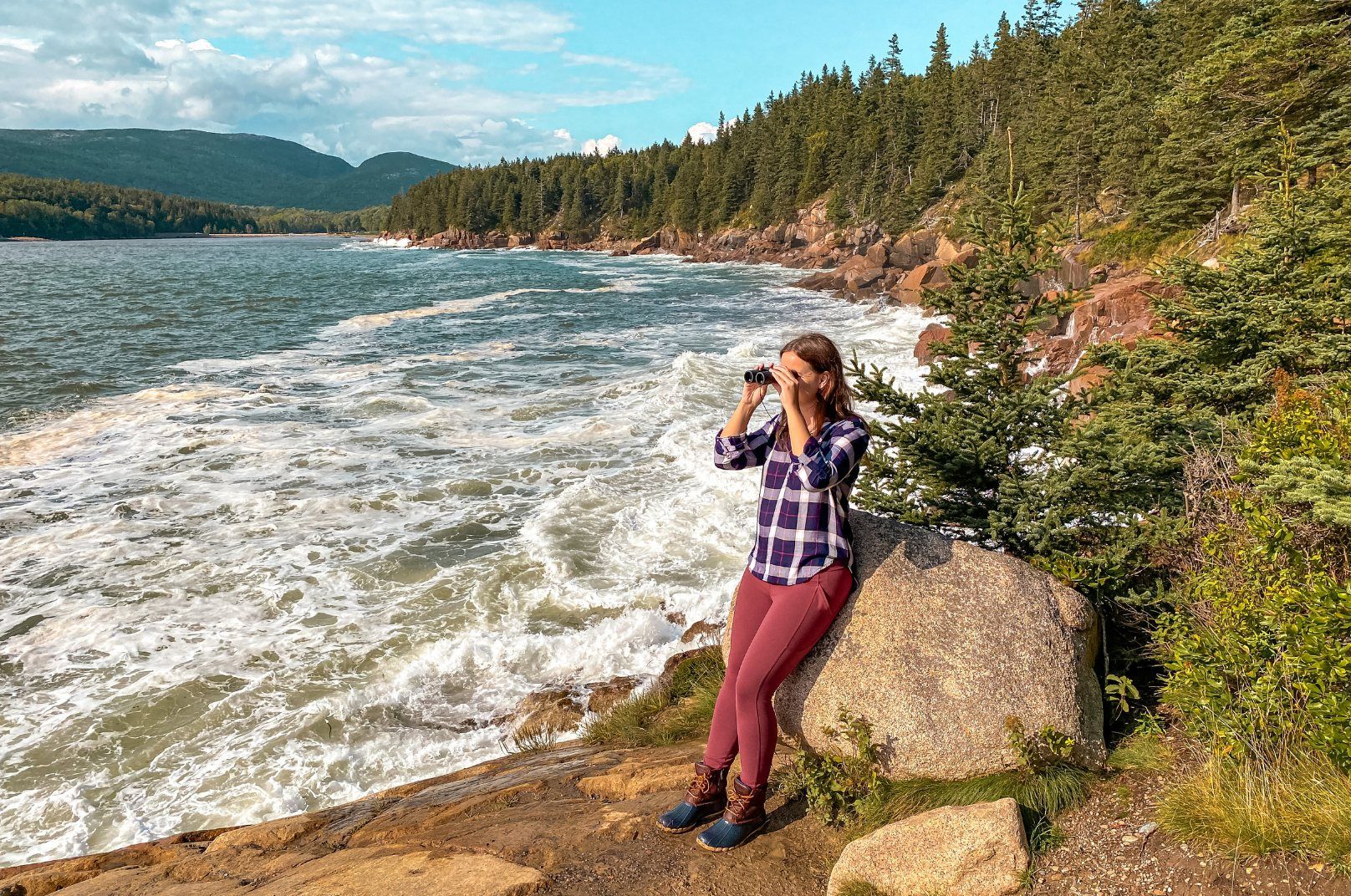
Acadia is one of the original U.S. National Parks, and it was the first national park in the Eastern United States. While Acadia is one of the smaller national parks, it packs a big punch with its iconic coastlines, mountains, hikes, and lighthouses. So here’s what you need to know for planning a trip to Acadia National Park.
Tips for Visiting Popular National Parks
This national park has hikes, drives, and adventures for all ages and abilities, and even the easy excursions have incredible payoffs.
Here’s everything you need to know for planning a trip to Acadia National Park!

When To Go
September – October is the best time to visit Acadia because the summer crowds will have dispersed, and the foliage will be changing. Late September to mid-October is the peak time for leaf-peeping. Hotels and vacation homes will have reduced rates, and temperatures will drop as well – into the 40s and 50s – so bring a sweatshirt. Some restaurants, tour operators, water activities, campsites, and RV parks will close for the season beginning in October.
November – February is the off-season. Temperatures will be below freezing, and many of Acadia’s hikes and scenic drives will be closed. A few hotels and restaurants will remain open, but most vacation homes are closed down for the winter. You will be driving in snow, so please bring or rent an all-wheel or four-wheel drive vehicle. You can score some great hotel deals in these months, and you can rent snow gear and do guided snow activities.
March – May is the shoulder season. Some vacation homes will be available, more hotels will be open, and most of the park’s facilities, trails, and scenic drives will re-open (weather dependent) by mid-April. You’ll still be able to get some bargain accommodation rates, and it’ll feel like you have the park practically to yourself. Temperatures will rise from the mid-20s in March to the mid-50s in May. These are the rainiest months of the year, so always have rain gear with you, be prepared to hike in the mud, and it’ll be foggy.
June – August is Acadia’s peak travel season because these are the warmest and driest months of the year. Daytime temperatures can climb to the high 70s, but the nights will be in the 50s, so bring layers. If you’re going to visit in the summer, you should book hotels, campsites, RV sites, and vacation homes at least a year in advance, and you should book tours and bike rentals several months before your trip. Rain and mud are always a possibility, so keep rain gear with you. You’ll want to do the popular hikes and drives early in the morning to find parking and beat the crowds.

What To Do
 Drive the Park Loop Road – my favorite stops are Thunder Hole and Otter Point.
Drive the Park Loop Road – my favorite stops are Thunder Hole and Otter Point.
 See the Bass Harbor Head Lighthouse – this is an incredible sunset spot, but there’s limited parking, so arrive early if you want to watch the sun go down here.
See the Bass Harbor Head Lighthouse – this is an incredible sunset spot, but there’s limited parking, so arrive early if you want to watch the sun go down here.
 Drive (or hike) up to the Cadillac Mountain Summit.
Drive (or hike) up to the Cadillac Mountain Summit.
 Take a puffin cruise.
Take a puffin cruise.
 Explore Bar Harbor.
Explore Bar Harbor.
 Do a sea kayaking tour.
Do a sea kayaking tour.
 Drive the loop road on the Schoodic Peninsula.
Drive the loop road on the Schoodic Peninsula.
 Go to a ranger-led stargazing session at Sand Beach.
Go to a ranger-led stargazing session at Sand Beach.
 Rent motorized bikes to bike the Carriage Roads.
Rent motorized bikes to bike the Carriage Roads.

Best Hikes
 Ocean Path – easy, 4.4 miles out and back. You can access this trail at many points along the Park Loop Road, and I recommend you prioritize hiking from Thunder Hole to Otter Point.
Ocean Path – easy, 4.4 miles out and back. You can access this trail at many points along the Park Loop Road, and I recommend you prioritize hiking from Thunder Hole to Otter Point.
 Cadillac Summit Loop Trail – easy, 0.5-mile loop.
Cadillac Summit Loop Trail – easy, 0.5-mile loop.
 Precipice Trail – strenuous, 3.2 miles out and back. This is an exposed hike that requires some climbing. Do not attempt this hike if you have children, are afraid of heights, aren’t in good physical condition, or it’s wet.
Precipice Trail – strenuous, 3.2 miles out and back. This is an exposed hike that requires some climbing. Do not attempt this hike if you have children, are afraid of heights, aren’t in good physical condition, or it’s wet.
 Gorge Path – difficult, 2.5 miles out and back. This trail requires stream crossings, so bring appropriate footwear.
Gorge Path – difficult, 2.5 miles out and back. This trail requires stream crossings, so bring appropriate footwear.
 The Beehive Trail – strenuous, 1.4 miles out and back. This is a rung and ladder trail with steep granite staircases, iron rungs, and exposed cliff faces. Do not attempt this hike if you have children, are afraid of heights, aren’t in good physical condition, or it’s wet.
The Beehive Trail – strenuous, 1.4 miles out and back. This is a rung and ladder trail with steep granite staircases, iron rungs, and exposed cliff faces. Do not attempt this hike if you have children, are afraid of heights, aren’t in good physical condition, or it’s wet.
 The Bubbles (North Bubble, South Bubble, and Bubble Rock) – moderate-difficult, 1.4 miles out and back. The Bubbles Divide Trail has spur trails to let you experience all of The Bubbles in one hike. These trails do have some rock scrambling.
The Bubbles (North Bubble, South Bubble, and Bubble Rock) – moderate-difficult, 1.4 miles out and back. The Bubbles Divide Trail has spur trails to let you experience all of The Bubbles in one hike. These trails do have some rock scrambling.
 Jordan Pond – easy-moderate 3.5-mile loop. The southern portion of the trail (near the Jordan Pond House Restaurant) has the iconic views of the bubbles.
Jordan Pond – easy-moderate 3.5-mile loop. The southern portion of the trail (near the Jordan Pond House Restaurant) has the iconic views of the bubbles.

Where To Stay
Most of Acadia National Park is on Mount Desert Island, and I recommend staying on this island instead of the more remote Schoodic Peninsula section of the park.
Mount Desert Island has lots of coastal towns with incredible hotels and dreamy vacation homes, and Bar Harbor is the most popular and expensive of these towns. As a general rule of thumb, the further west you go on the island, the less crowded and cheaper your accommodation will be.
If you’re bringing an RV or motorhome, I suggest Smuggler’s Den Campground, which is right outside Acadia’s limits in Southwest Harbor. The RV parks inside Acadia are very rustic, with no hook-ups. If you want to tent camp, then the four in-park campgrounds will be best for you. All RV and tent campsites are seasonal and usually open from early May to mid-October.
Glamping sites are some of my favorite national park accommodations. So if you want to camp in luxury with all the comforts of home, I recommend Under Canvas Acadia, which is usually open from mid-May to early October.

Where To Eat
The Jordan Pond House Restaurant is the most famous restaurant on Mount Desert Island because of its incredible food and location inside the national park. So if you want to eat here, arrive early and prepare to wait in line for parking and food.
Bar Harbor: The Chart Room (American/Steakhouse/Seafood, Waterfront, $$-$$$), The Thirsty Whale Tavern (Bar/Seafood, $$-$$$), Jeannie’s Great Maine Breakfast (American/Cafe, $$-$$$), 2 Cats (American, $$-$$$).
Southwest Harbor: Sips (American, $$), Drydock Café & Inn (Seafood, $$), Eat-A-Pita & Cafe 2 (Bistro, $$).
Northeast Harbor: Colonel’s Restaurant and Bakery (American/Seafood, $$-$$$), Asticous Restaurant (American/Seafood, $$-$$$), Common Good Kitchen Cafe (Cafe, $).
Winter Harbor: Chase’s Restaurant (Seafood, $), The Pickled Wrinkle (American, $$), J.M. Gerrish Restaurant (Cafe, $$-$$$).

Know Before You Go
 Most roads, beaches, picnic areas, campgrounds, visitor centers, and restrooms are only open from May to mid-October.
Most roads, beaches, picnic areas, campgrounds, visitor centers, and restrooms are only open from May to mid-October.
 The Cadillac Summit road usually requires reservations.
The Cadillac Summit road usually requires reservations.
 Many of Acadia’s islands (reachable by ferry) close periodically to protect nesting bird species.
Many of Acadia’s islands (reachable by ferry) close periodically to protect nesting bird species.
 Most roads in the park are closed to RVs and oversized vehicles because of low bridge heights and limited turnaround space.
Most roads in the park are closed to RVs and oversized vehicles because of low bridge heights and limited turnaround space.
 Backcountry camping is not allowed anywhere in the park.
Backcountry camping is not allowed anywhere in the park.
 Most of Acadia’s trails go near a cliff edge, so always be careful of your footing and watch out for rogue waves.
Most of Acadia’s trails go near a cliff edge, so always be careful of your footing and watch out for rogue waves.
 Poison ivy is common here, so always stay on the trails.
Poison ivy is common here, so always stay on the trails.
 Acadia is cold and wet year-round, so always keep rain gear and layers with you.
Acadia is cold and wet year-round, so always keep rain gear and layers with you.
 Always wear waterproof footwear because most trails are usually wet and muddy year-round.
Always wear waterproof footwear because most trails are usually wet and muddy year-round.
 The water is freezing in Acadia, and the tides are strong, so only do guided water activities.
The water is freezing in Acadia, and the tides are strong, so only do guided water activities.
 Complimentary hop-on/hop-off shuttles link hotels, inns, and campgrounds with trailheads, scenic drives, and attractions inside Acadia National Park.
Complimentary hop-on/hop-off shuttles link hotels, inns, and campgrounds with trailheads, scenic drives, and attractions inside Acadia National Park.

Is there anything you’d add to this guide for planning a trip to Acadia National Park? If so, share with us in the comments!

Plan The Rest Of Your Trip

Recommended Tours in Acadia National Park

Frequently Asked Questions
Where should I stay when visiting Acadia National Park?
Most of Acadia National Park is on Mount Desert Island, and I recommend staying on this island instead of the more remote Schoodic Peninsula section of the park.
Mount Desert Island has lots of coastal towns with incredible hotels and dreamy vacation homes, and Bar Harbor is the most popular and expensive of these towns. As a general rule of thumb, the further west you go on the island, the less crowded and cheaper your accommodation will be.
If you’re bringing an RV or motorhome, I suggest Smuggler’s Den Campground, which is right outside Acadia’s limits in Southwest Harbor. The RV parks inside Acadia are very rustic, with no hook-ups. If you want to tent camp, then the four in-park campgrounds will be best for you. All RV and tent campsites are seasonal and usually open from early May to mid-October.
Glamping sites are some of my favorite national park accommodations. So if you want to camp in luxury with all the comforts of home, I recommend Under Canvas Acadia, which is usually open from mid-May to early October.
How many days do you need in Bar Harbor?
Bar Harbor is the most popular home base for exploring Acadia National Park. I recommend spending at least five days in Acadia National Park. This will give you plenty of time to hike, bike, drive the scenic drives, and thoroughly explore this national park.
How long does it take to drive Acadia National Park?
The Park Loop Road is 27 miles long, and you should plan on spending a full day driving this loop, hiking along the route, and stopping at overlooks.
What is the best time to visit Acadia National Park?
September – October is the best time to visit Acadia because the summer crowds will have dispersed, and the foliage will be changing. Late September to mid-October is the peak time for leaf-peeping. Hotels and vacation homes will have reduced rates, and temperatures will drop as well – into the 40s and 50s – so bring warm clothes. Some restaurants, tour operators, water activities, campsites, and RV parks will close for the season beginning in October.
November – February is the off-season. Temperatures will be below freezing, and many of Acadia’s hikes and scenic drives will be closed. A few hotels and restaurants will remain open, but most vacation homes are closed down for the winter. You will be driving in snow, so please bring or rent an all-wheel or four-wheel drive vehicle. You can score some great hotel deals in these months, and you can rent snow gear and do guided snow activities.
March – May is the shoulder season. Some vacation homes will be available, more hotels will be open, and most of the park’s facilities, trails, and scenic drives will re-open (weather dependent) by mid-April. You’ll still be able to get some bargain accommodation rates, and it’ll feel like you have the park practically to yourself. Temperatures will rise from the mid-20s in March to the mid-50s in May. These are the rainiest months of the year, so always have rain gear with you, be prepared to hike in the mud, and it’ll be foggy.
June – August is Acadia’s peak travel season because these are the warmest and driest months of the year. Daytime temperatures can climb to the high 70s, but the nights will be in the 50s, so bring layers. If you’re going to visit in the summer, you should book hotels, campsites, RV sites, and vacation homes at least a year in advance, and you should book tours and bike rentals several months before your trip. Rain and mud are always a possibility, so keep rain gear with you. You’ll want to do the popular hikes and drives early in the morning to find parking and beat the crowds.
Is Bar Harbor worth visiting?
Yes! Bar Harbor is the most popular place to stay when visiting Acadia National Park. But even if you don’t stay here, this picture-perfect coastal town is worth a visit.
Can you drive through Acadia National Park?
Driving the 27-mile Park Loop Road is one of the most popular activities to do in Acadia National Park.
How much time do you need in Acadia?
I recommend spending at least five days in Acadia National Park. This will give you plenty of time to hike, bike, drive the scenic drives, and thoroughly explore this national park.
What town is closest to Acadia National Park?
Bar Harbor is the closest and most popular town for visiting Acadia National Park.

This guide for planning a trip to Acadia National Park is not a sponsored post, and, as always, the thoughts and opinions expressed in this guide for planning a trip to Acadia National Park are entirely my own. Some of the links in this guide for planning a trip to Acadia National Park are affiliate links, and, at no cost to you, I may earn a small commission.
 Destinations
Destinations Packing
Packing Travel Tips
Travel Tips
 Photography
Photography Points & Miles
Points & Miles Credit Cards
Credit Cards